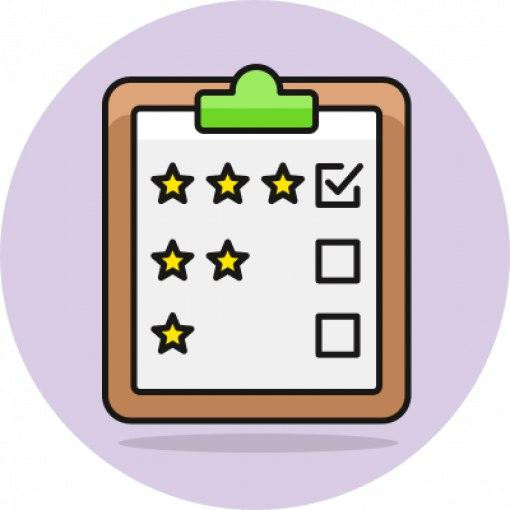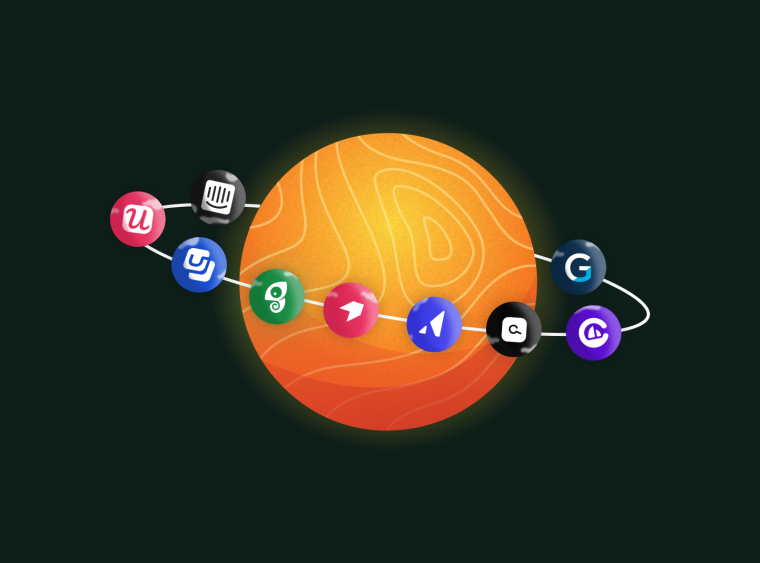Innovators, early adopters, early majority, late majority, and laggards are the five different customer segments, each related to a different stage of the product adoption curve. Understanding these five product adoption phases will help your SaaS business with its product-led growth goals.
Keep reading for actionable tips on how to use in-product experiences to increase user activation and sustain business growth throughout the entire adoption curve of your SaaS product.We’ll pepper this article with actionable tips on how to use in-product experiences to increase user activation and sustain business growth throughout the entire adoption curve of your SaaS product.
The product adoption curve shows how and when certain customer segments adopt products.
They’re categorized into five stages:
Innovators
Early adoptors
Early majority
Late majority
Laggards
Tailoring your SaaS product’s in-app messaging to each stage can boost product adoption, user activation, and customer retention.
What is product adoption curve?
The product adoption curve is a visual representation of when different customer segments are most likely to adopt your software.
When your product marketing team understands your product adoption curve, they can adjust product messaging, and the timing and placement of that messaging, to score higher product adoption and product retention rates.
The concept of the product adoption curve (also called the tech adoption curve) comes from Everett M. Rogers and his book Diffusion of Innovations, where he explains how different types of people adopt new technology at different times in its lifecycle.
Rogers’ adoption model identified five stages of the technology adoption lifecycle and the five segments of people that fall into each stage of tech adoption:
Innovators (2.5%)
Early adopters (13.5%)
Early majority (34%)
Late majority (34%)
Laggards (16%)
This model has been widely accepted by product managers and startup founders to explain different stages of product adoption. Represented visually, the product adoption curve looks like this:

Understand the 5 product adoption curve stages
Each stage of the product adoption curve is essential and mandatory. Despite the clear peak in product adoption rates by early majority customers, a SaaS business can’t jump straight into the deep end and expect to win these customers without also investing time and care into the innovators and early adopters.
Knowing that your SaaS company needs to go through each of these stages, let’s explore them to understand why they’re important, how you can profit from them, and what product marketing teams need to do to maximize their opportunities.
Customer segment #1: Innovators
The innovators, the risk-takers, the enthusiasts. These tech aficionados are often the smallest user base of your product across its lifecycle. However, that doesn’t mean they’re any less important than the rest of your customers.
Innovators come in fast, and they move fast. They enjoy being among the first in the tech adoption process. Being first is often a stronger motivational driver for them than having a problem that needs solving (or a job-to-be-done) within your product. Therefore, they’re not necessarily a sign that you’ve found product-market fit.
Typically, these users aren’t bothered by bugs or clunky UX. They’re more interested in costs, so there’s a high chance you’ll need to meet them at what they’re willing to spend—or offer a freemium plan—if you want to activate them within your product early on.

How to make the most of innovators for your product lifecycle
For all of their supposed flaws, innovators are exceptionally useful. They’re essentially your Beta testers. Innovators don’t necessarily care about a specific job-to-be-done; they care more about trying new things and being among the first to do so.
Innovators are trailblazers. They’ll give your MVP a run for its money, and they’ll be there to provide you with essential product feedback. The good, the bad, the downright ugly, you’ll hear it all from this customer segment. Take their feedback on board, show them you’re actively making changes, and you could hold on to some of your “founding users” for years to come.
🦎 Pro tip: You can use in-app Microsurveys to collect quantifiable feedback from innovators while they are interacting with your product and capture their thoughts, opinions, and suggestions right then and there.

Run product surveys with Chameleon
In-app Microsurveys allow you to capture important user feedback when it's most relevant
Stage 2: Early adopters—win over thought leaders with fast time-to-valueCustomer segment #2: Early adopters
The thought leaders, the problem solvers, the industry visionaries. Early adopters come in slightly larger numbers than innovators. They also tend to have a genuine need for your product, driven out of a tired way of accomplishing their jobs-to-be-done. There’s a high chance they’ve been looking for a solution like yours for a while, and they’re excited to finally get their hands on it.
Early adopters are okay with a few glitches along the way, as anything is better than their current solution. They’re also okay with paying for the product. Early adopters are typically financial decision-makers within their businesses, but they still expect to get their money’s worth.
Early adopters need fast time-to-value; they want their “aha!” moment yesterday, and they might expect more personalized support solutions than you can handle at this stage. But that’s okay because of what they can bring to your product growth table: valuable feedback to help you refine and personalize your product for faster “aha!” moments.

How to make the most of early adopters for your product lifecycle
Early adopters use your product because they have a real need for the solution you provide. There’s a lot you can learn from how they discover your product, the language they use to discuss your product, and the journey they take within your product.
There’s also a lot to be said for segmenting this user base going on their “aha!” moment and reason for churn. Understanding all of the above can help you with product positioning, product messaging, and user onboarding.
🦎 Pro tip: Use product walkthroughs to give early adopters a personalized experience that enables a rapid time-to-value with your product. This will help you win more customers quicker, fight churn better, and cross the chasm faster.

🦎 Pro tip: In the book Crossing the Chasm, Geoffrey Moore goes into great detail on how you can turn early adopters into the early majority, and successfully bring your product to the masses. He recommends
Providing case studies and testimonials to garner trust
Adapting your product messaging to this new segment
Making use of customer feedback to refine your product
Stage 3: Early majority—tap into your product-market fit
The pragmatists, the cautious researchers. The early majority is a tough customer segment to reach. Crossing the chasm seems easy with early adopters; it’s more difficult with the early majority, but it’s well worth it.
The early majority is the largest and most promising customer segment within your product lifecycle. It’s the time your SaaS can truly start seeing an increase in MRR. Once you’ve crossed the chasm, you’ve essentially found a product-market fit.
With early majority customers, you’re building a user base that has a clear job-to-be-done within your product. After devoted research, these users have faith that your product is the one to help them complete their tasks.
The early majority don’t want to see any bugs. They come rife with pain points, and they’re putting all their eggs in your basket.
These customers like to take their time. They seek out referrals—which is tricky as they run in circles with other early majority users, not early adopters.

How to make the most of the early majority for your product lifecycle?
The early majority are a valuable resource for understanding if your product and features perform as you expected. How these users interact with your product can give you valuable insights in adapting your user onboarding strategies so future users can find their “aha!” moment even quicker.
The actions or support requests your early majority user base takes within your app can also help scale your self-serve learning strategy.
🦎 Pro tip: Use analytics to gather insights, and to adapt and refine onboarding sequencing. Your goal here is to home in on any gaps your present users are experiencing, fix them for a seamless experience, and reduce the time to value.
That’s it! You’ve crossed the chasm! You’ve made it, right? Not quite. You’ve got the late majority and laggards to work with next. So, how can your early majority further support your product growth?
🦎 Pro tip: Use a combination of different in-product survey types to collect user feedback. The quantitative and qualitative data you can collect can help you with further product development direction. Or you can use the insights to craft compelling in-product messaging and testimonials using a digital adoption platform.
That’s it! You’ve crossed the chasm! You’ve made it, right? Not quite. You’ve got the late majority and laggards to work with next So, how can your early majority further support your product growth?

Download the In-Product Experiences Benchmark Report
Improve your in-app messaging and scale self-serve success with data and insights from 300 million user interactions with Chameleon Experiences. We'll send the Report to your inbox!
Stage 4: Late majority—encourage product adoption in hesitant users
The hesitators, the mainstream adopters. The early and late majority customer segments are typically equal in size, making your late majority equally important in achieving greater MRR and ARR. The late majority are often more reluctant to change, though. They might adopt your platform for fear of missing out or losing their competitive edge.
Typically this segment has a lower budget than their predecessors, which means they’re more conservative with their spending and even slower to say yes than the early majority customers.
Once again, your product messaging will need to shift at this stage. But the good thing is that this segment already knows what your product does, they’re familiar with your brand, and they know how they could benefit from your solution. However, they’re still not signed up.

How to improve product adoption among your late majority
You’ll need to reposition your product marketing tactics to be more personalized to business use cases, specific jobs-to-be-done, and business sectors. Essentially, it’s in-depth persona-based marketing at this stage.
Your segmented efforts will likely be costly as you’ll need to invest in smart tools to help you execute niche campaigns. However, by now, your SaaS should be in a comfortable enough position to get to work.
At this product adoption curve stage, consider using:
Retargeting campaigns
PPC advertising
Organic SEO tactics
Email marketing campaigns
Data-scraping chatbots
🦎 Pro tip: The late majority signs up to your product out of necessity, not out of curiosity. Knowing this, you need to make the activation process easy. Show the late majority which competitors are already using your product and how easy and seamless the transition can be through product demos.
Stage 5: Laggards—introduce new and innovative products and features
The skepticists, the resisters to change, the less tech-savvy. The laggards certainly don’t sound appealing, and that’s for good reason. These are the users who’ve adopted your product because it seems popular, but they still don’t believe it’s necessary.
These users are stuck in their ways, and they often adopt your product because they don’t have a choice. Despite laggards still being a relatively large customer segment, they’re often considered bad news in terms of growth. If you’ve reached laggards, it means you’ve potentially saturated your market, or you're losing it to a product that’s doing it better.
👉 Check out an interactive demo and see how other Product Marketers use Chameleon to drive product adoption.

How to improve product adoption among your laggards
If you’ve identified your product lifecycle as selling to laggards, it’s time to think about building a new product or expanding the existing one with innovative features. What does previous customer data tell you? What can you learn from it? How can you get back to the start of the product adoption cycle for those early innovators and the early majority with a new feature?
Laggards need a lot of assistance and reassurance because they’re skeptical of new products. In this last phase of the adoption curve, you should focus on real-time demos and webinars that emphasize how low-risk a solution you provide. Explain how alternatives can’t meet these customers’ needs, and fortify your claims with testimonials from those who have used your product successfully.
🦎 Pro tip: For laggards, use contextual, in-app messages outlining the next step to help them better understand your features. Nudges are especially helpful for users who won’t actively explore new functionalities on their own.
How to calculate your product adoption rate
You can calculate your product adoption rate with the following formula.

Knowing which adoption rate to aim for will depend on your industry and business type. Now’s the time to do some competitor research and take a look at how other SaaS products are performing.
According to Mixpanel’s 2024 Product Benchmark Report, SaaS businesses saw an average monthly growth rate of 2.4%, while the best-performing companies saw a growth rate of 6%.
Drive innovation by leveraging the product adoption curve
Remember, there’s something to be learned from every stage of your product adoption curve—there’s something to be earned from it, too. If you see your SaaS nearing the end, jump back to the drawing board and see where you can use what you’ve learned to innovate new features and reach new audiences.
In doing so, you’ll improve product adoption and product retention rates. You’ll also increase customer lifetime value, be better able to try new data-driven product experiments, and create a new product adoption curve to boost MRR all over again.
Overcome the product adoption curve with Chameleon
The product adoption curve helps you visualize when certain customer segments will adopt your software. By taking advantage of the product adoption cycle, your marketing teams can adjust messaging, framing, and timing to win over new users and retain old ones.
It all starts with a small group of innovators who are enthusiastic about trying new technologies. It ends with the laggards, a significant portion of your base who are skeptical, risk-averse, and will need time to warm up to your product.
Somewhere in the middle—amongst the early and late majority—you’ll find your product-market fit.
With the right product adoption tool like Chameleon, you can build beautiful on-brand onboarding experiences, win over new users, and find that product-market fit easily. From microsurveys that help you gather real-time user feedback to product tours that put feature adoptions on full throttle, it’s the solution for onboarding innovators, laggards, and everyone in between.





